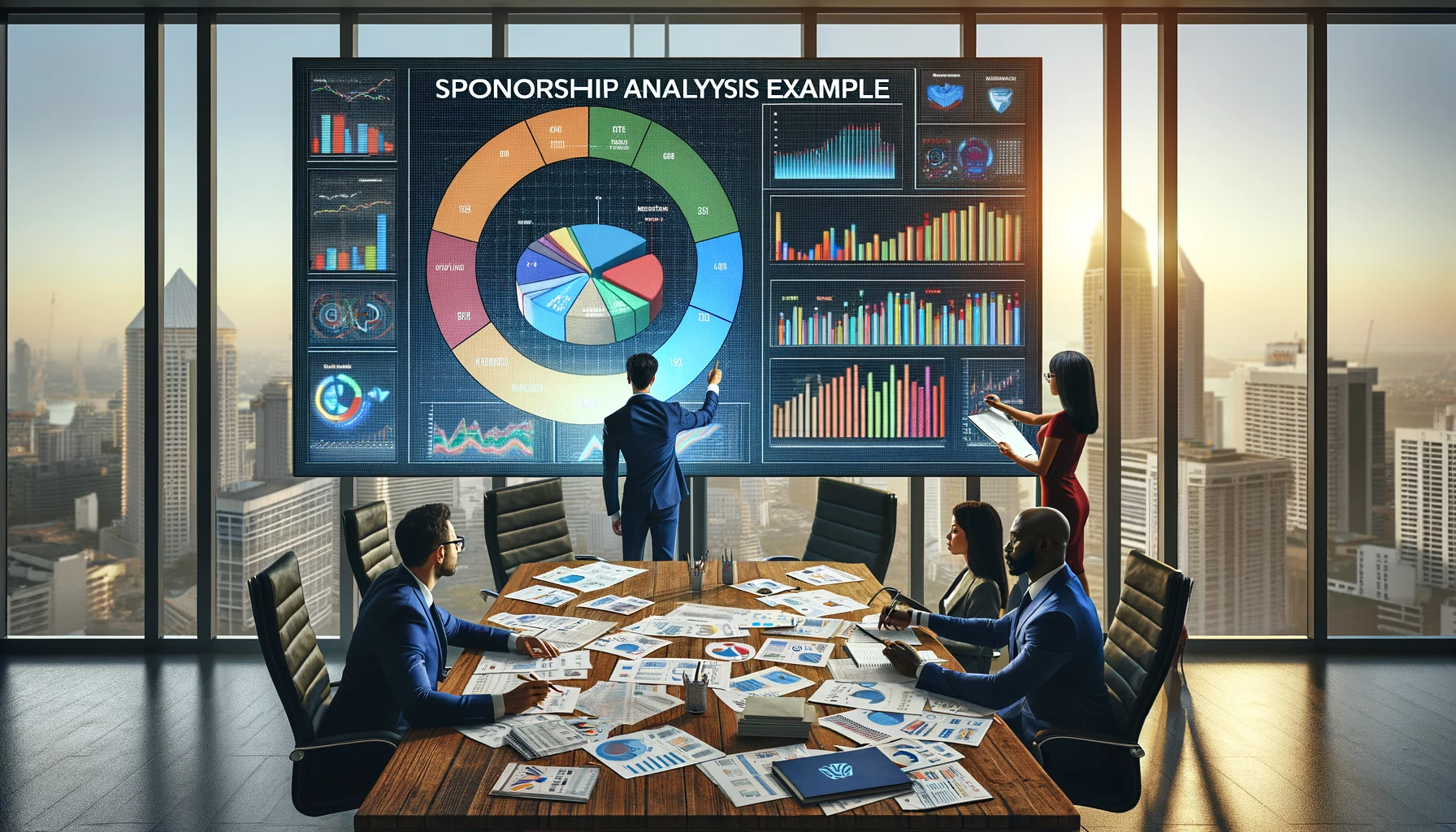In today’s dynamic business landscape, sponsorships have become integral for brand exposure, credibility, and community engagement. Companies of all sizes are investing in sponsorship opportunities to connect with their target audience and establish a strong market presence. Understanding the intricacies of sponsorship analysis is crucial to making informed decisions that yield fruitful results. In this comprehensive guide, we will delve into the world of sponsorship analysis example and strategies that have proven to be successful.
Sponsorship Analysis Example: Unveiling the Secrets of Successful Sponsorship Strategies

1. Introduction to Sponsorship Analysis
Sponsorship analysis is the process of evaluating the effectiveness of sponsorship initiatives. It involves assessing the impact of sponsorships on brand visibility, customer engagement, and overall return on investment (ROI).
2. Defining Sponsorship Objectives
Before diving into analysis, it’s essential to establish clear objectives. Whether it’s increasing brand awareness, driving sales, or supporting a social cause, defining goals sets the foundation for effective sponsorship analysis.
Key Components of Sponsorship Analysis for Events
Understanding the components of sponsorship analysis is pivotal in gauging the success of any sponsorship initiative. Here are the critical elements to consider:
1. Audience Engagement
Analyzing the level of engagement with the target audience is crucial. This includes measuring website traffic, social media interactions, and event attendance related to the sponsored event.
2. Brand Visibility
Monitoring brand visibility metrics such as media mentions, logo placements, and social media impressions provides insights into the reach and impact of the sponsorship.
3. ROI Calculation
Calculating the return on investment helps businesses assess the profitability of the sponsorship. By comparing the investment made with the revenue generated, companies can evaluate the effectiveness of their sponsorship strategies.
Real-Life Sponsorship Analysis Example
Let’s consider a real-life example of a sports equipment company, SprintSport, sponsoring a major sporting event.
1. Audience Engagement
SprintSport witnessed a 30% increase in website traffic during the event week, indicating a surge in audience interest. Social media interactions, including likes, shares, and comments, also saw a significant uptick.
2. Brand Visibility
The company’s logo was prominently displayed on event banners, jerseys, and promotional materials. Media outlets covered the event extensively, featuring SprintSport in multiple news articles and broadcasts, resulting in millions of impressions.
3. ROI Calculation
By comparing the sponsorship investment with the increased sales and brand exposure, SprintSport calculated an impressive 4:1 ROI, indicating a highly successful sponsorship initiative.
Strategies for Effective Sponsorship Analysis
Crafting a successful sponsorship analysis requires a strategic approach. Here are some effective strategies to enhance your sponsorship analysis efforts:
1. Utilize Data Analytics
Harness the power of data analytics tools to track online mentions, social media interactions, and website traffic. Analyzing this data provides valuable insights into audience behavior and preferences.
2. Conduct Surveys and Feedback Sessions
Engage with event attendees and customers through surveys and feedback sessions. Their responses can provide qualitative data, shedding light on the emotional connection between the audience and the sponsored event.
3. Collaborate with Influencers
Partnering with influencers related to the event’s theme can amplify brand visibility. Influencers can create buzz, driving more traffic to your website and social media platforms.
Conclusion
Sponsorship analysis is not merely a numbers game; it’s about understanding the audience, creating meaningful connections, and maximizing brand exposure. By comprehensively evaluating the impact of sponsorships, businesses can refine their strategies, ensuring a higher return on investment and long-term brand loyalty.
Are you ready to elevate your sponsorship game? Request a demo from AIM Technologies today and discover how our innovative solutions can streamline your sponsorship analysis process and drive exceptional results.
Frequently Asked Questions
Q1: How can small businesses benefit from sponsorship analysis?
- Small businesses can benefit by targeting local events and leveraging social media platforms to measure audience engagement and brand visibility. By analyzing these metrics, they can refine their future sponsorship decisions.
Q2: Is sponsorship analysis applicable to nonprofit organizations?
- Absolutely. Nonprofit organizations can use sponsorship analysis to assess the impact of fundraising events, community outreach programs, and partnerships. It helps in optimizing efforts and garnering more support.
Q3: What role do partnerships play in sponsorship analysis?
- Partnerships with other businesses or organizations can enhance sponsorship initiatives. Analyzing the collaborative impact provides valuable insights into the effectiveness of joint sponsorships.
Q4: How often should companies conduct sponsorship analysis?
- Companies should conduct a sponsorship analysis after every sponsored event or initiative. Regular analysis ensures that strategies are adapted based on changing audience dynamics and market trends.
Q5: Can sponsorship analysis help in crisis management?
- Yes, sponsorship analysis can aid in crisis management by evaluating the impact of sponsorships during challenging times. Understanding audience sentiment and responses helps in crafting appropriate crisis communication strategies.




